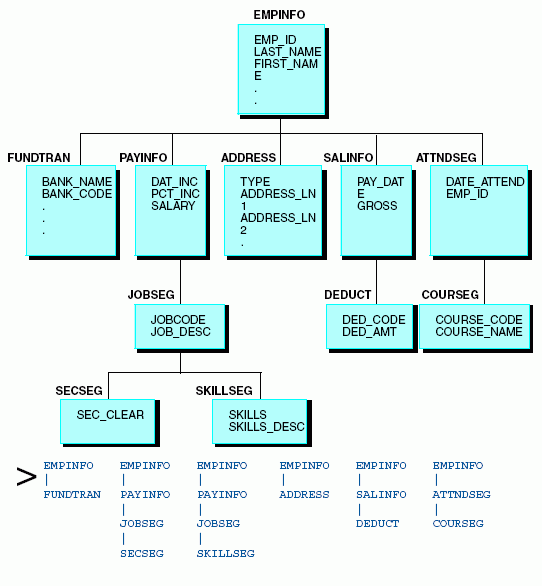The EMPLOYEE data structure
has six paths. The paths begin with the EMPINFO segment (the root),
and end with:
- The FUNDTRAN
segment.
- The SECSEG segment.
- The SKILLSEG
segment.
- The ADDRESS
segment.
- The DEDUCT segment.
- The COURSEG
segment.
Each path is logically independent of the others. For example,
an instance of DEDUCT is dependent upon its ancestor segment instances
SALINFO and EMPINFO, but the ADDRESS segment lies in a different
path, so DEDUCT is independent of ADDRESS.
This is because employee deductions are identified by the paycheck
from which they came, so deduction information can be entered into
the data source only if the paycheck from which the deduction was
made is entered first. However, deductions are not identified by
the employee address. An employee paycheck deduction can be entered
without the address being known, and conversely, the employee address
can be entered before any paychecks and deductions have been entered
into the data source.

